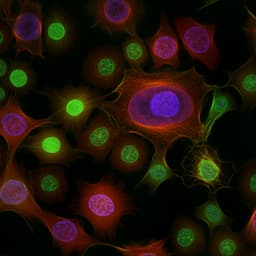
Medicine and Health
Potential Pathophysiological Pathways in the Complex Relationships between OSA and Cancer
M. Sánchez-de-la-torre, C. Cubillos, et al.
Discover the intriguing connection between obstructive sleep apnea and cancer incidence as explored by researchers Manuel Sánchez-De-La-Torre, Carolina Cubillos, Olivia J Veatch, Francisco Garcia-Rio, David Gozal, and Miguel Angel Martinez-Garcia. This study delves into how factors like hypoxemia and obesity may influence cancer risk, revealing vital pathophysiological pathways that warrant further investigation.
~3 min • Beginner • English
Related Publications
Explore these studies to deepen your understanding of the subject.







